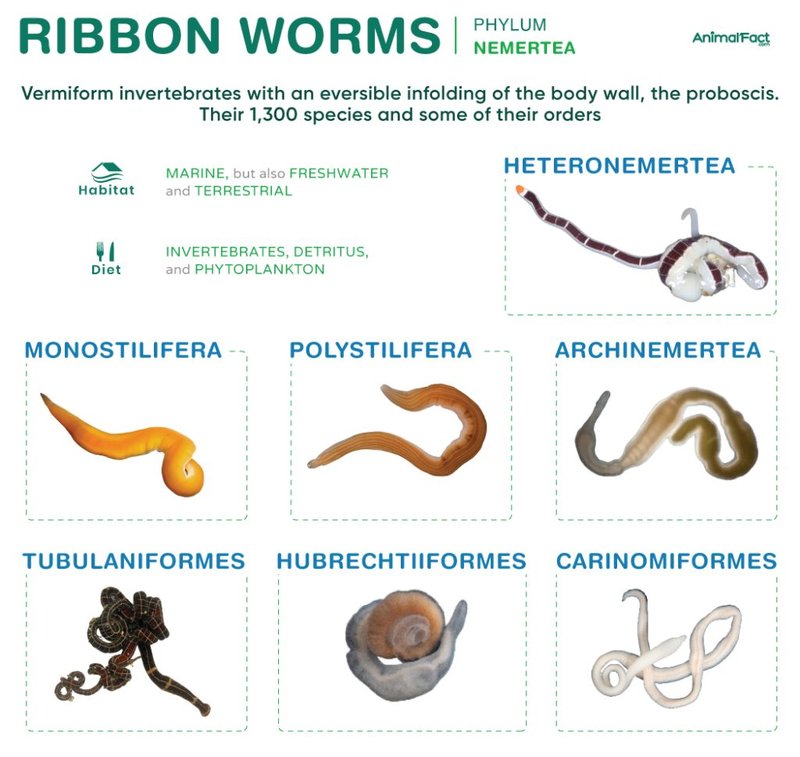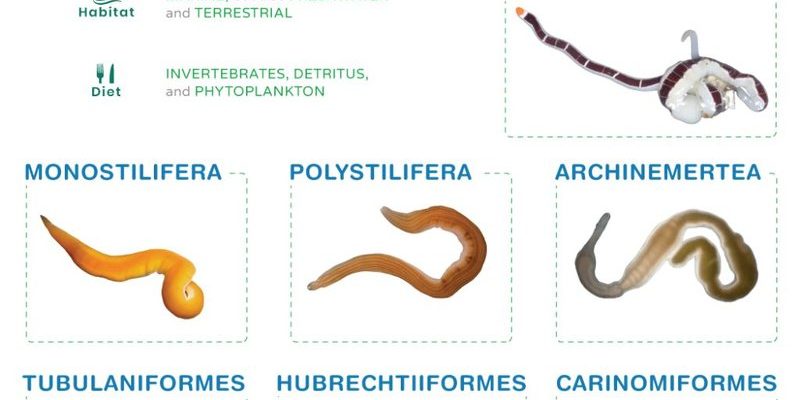
Ribbon worms belong to a group called Nemertea, and they can be found in a variety of marine environments. They come in all shapes and sizes, with some reaching impressive lengths. What’s truly remarkable, though, is their ability to manipulate their bodies. It’s not just a party trick; this skill helps them hunt, defend themselves, and navigate their watery worlds. So, let’s dig a little deeper into how ribbon worms do this and why it matters.
The Anatomy of a Ribbon Worm
To understand how ribbon worms expand and contract, we first need to take a look at their anatomy. These creatures are long and slender, often resembling a piece of spaghetti. They have a soft, flexible body, which is a big part of what allows them to move as they do. But it’s not just their shape that matters; it’s also the structure beneath the surface.
Ribbon worms have a body that’s divided into sections, each containing muscle fibers. These muscles are what allow the worm to change its shape. When the muscles contract, the body pulls in and becomes thinner. When they relax, the body can expand and stretch out. It’s a simple yet effective way to move through their environments—almost like using a balloon!
Interestingly, ribbon worms also have a specialized structure called a proboscis. This is a long, tube-like feature that can extend out from their bodies. It helps them capture prey by quickly lashing out and snagging unsuspecting animals. The way they use their proboscis can illustrate even more how effective their body movements are in the wild.
How Muscles Work Together
Now that we know about their anatomy, let’s talk about how the muscles work together to create movement. Ribbon worms use a type of motion called burrowing or crawling. Imagine pushing down on a spring; when you let go, it pops back up. That’s kind of like what happens with a ribbon worm’s muscles.
When a ribbon worm wants to expand its body, it relaxes certain muscles while contracting others. This coordinated effort allows the body to lengthen. The worm can inch its way forward, using its muscular control to push against the substrate—like sand or mud—on the ocean floor.
The process can be broken down into a few steps:
- Contraction: The muscles along one side of the body contract, pulling the body in that direction.
- Expansion: With the opposite muscles relaxing, the body can then stretch out behind it.
- Repeating the Process: By alternating these contractions, the ribbon worm creates a wave-like motion that propels it forward.
This movement isn’t just useful for traveling; it also helps them dig into the substrate to find food or to hide from predators. You might be surprised to know that this simple process is quite efficient for survival in the wild.
The Role of Hydrostatic Pressure
You might be wondering what gives ribbon worms their impressive flexibility. Here’s the thing: It’s all about hydrostatic pressure! These creatures rely on fluid-filled cavities within their bodies to help maintain shape and movement.
Imagine a balloon filled with water—when you squeeze it, the shape changes but the volume stays the same. Ribbon worms have a similar setup. The coelom, which is the fluid-filled cavity, provides internal pressure that works in conjunction with the muscle contractions. This allows them to expand and contract smoothly without losing their shape.
When the muscles contract, they push against this fluid, resulting in a change in form. This hydrostatic pressure enables the worm to stretch out when needed, making it easier to navigate through tight spaces or hunt for food. It’s a brilliant adaptation that really showcases nature’s ingenuity.
How Ribbon Worms Hunt
Now that we understand their movement, let’s talk about how ribbon worms use this skill to hunt. Their bodies aren’t just for expanding and contracting; they play a crucial role in capturing prey.
Ribbon worms often lie in wait, camouflaged in the sand or among rocks. When a small fish or crustacean comes close, the worm quickly extends its proboscis, grabbing the unsuspecting meal. This fast, fluid motion shows how effective their body expansion is for hunting.
You might think of it like a slingshot. The ribbon worm stores energy by contracting its body before letting it go, enabling a sudden burst of movement that is both surprising and effective. This ability to expand and contract plays a huge role in their survival, showing that movement is more than just getting from point A to point B.
Defense Mechanisms: Contracting to Protect
In addition to hunting, ribbon worms also use their body movements as a way to protect themselves from predators. When threatened, many ribbon worms can quickly contract their bodies. This not only makes them smaller and harder to spot but can also create a slippery surface that is tough for attackers to grab onto.
Some species even have the ability to regenerate parts of their body after a predator attack. If they get injured, they can contract their bodies to seal wounds and begin the healing process. It’s a remarkable survival strategy that emphasizes the importance of their flexibility and adaptability.
You might be surprised to learn that this ability to contract also helps ribbon worms fit into tight spots in their environment, which is another way they avoid being eaten. They practically have a built-in defense mechanism that combines movement, camouflage, and regeneration.
The Impact of Environment on Movement
Lastly, it’s important to consider how the ribbon worm’s environment influences its ability to expand and contract. These creatures thrive in diverse marine habitats, from sandy ocean floors to rocky shorelines. The type of substrate they inhabit can greatly affect how they move.
In soft sediment, ribbon worms can easily burrow, using their body’s flexibility to navigate through the sand. On harder surfaces, they might struggle a bit more, needing to adjust their movement strategies. The ability to adapt to different environments showcases their resilience and versatility.
As they explore their surroundings, they also adjust their movements based on the availability of food and the presence of predators. This flexibility in motion makes ribbon worms rather unique creatures in the animal kingdom.
In summary, ribbon worms are fascinating organisms with a remarkable ability to expand and contract their bodies. Through unique anatomical features and muscle coordination, they’ve developed effective methods to navigate their environments, hunt for food, and protect themselves from threats. What’s even more impressive is how they’ve adapted to different habitats, showcasing the creativity of nature.
By understanding how ribbon worms move, we not only appreciate their role in the ecosystem but also gain insights into the incredible adaptations that help life thrive in our oceans. So, the next time you think about movement in the animal kingdom, consider the clever ribbon worm and its accordion-like abilities!

